Coconut based cropping systems:
------------------------------
Coconut as a monocrop does not fully utilize the basic resources such as soil and sunlight available in the garden. Adoption of multiple cropping practices in coconut garden ensures better utilization of basic resources, enhances income and employment opportunities. Inter/ mixed crops are to be selected based on the age of the palms, size of the crown and availability of sunlight in the garden.
A variety of inter crops like pineapple, banana, elephant foot yam, groundnut, chillies, sweet potato and tapioca can be raised in coconut gardens upto 8-10 years.
During the second growth phase of palms, i.e., 10 to 22 years of age, growing of other crops in the interspace may be difficult due to poor sunlight availability. However, crops like colocasia, some varieties of banana like palayamkodan etc. which can tolerate shade can be cultivated in this phase.
After the palms attain a height of 5 to 6 metres (above 22 years) i.e., in older plantations, perennials like cocoa, pepper, cinnamon, clove and nutmeg can be grown as mixed crops along with the inter crops. In places where rainfall is not well distributed, irrigation is necessary during summer months. However, these crops are to be adequately and separately manured in addition to the manures applied to the coconut palms.
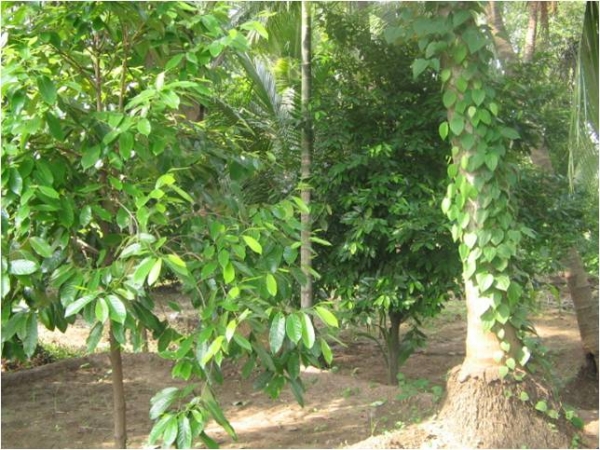
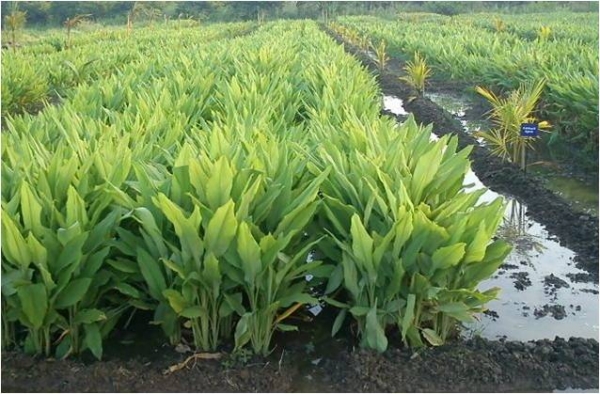
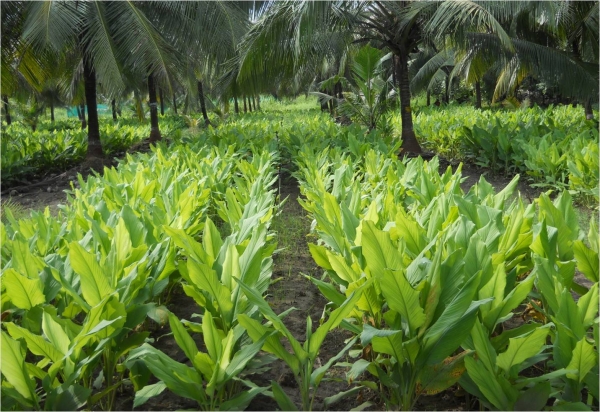
High Density Multispecies Cropping System :
-----------------------------------------
High density multispecies cropping system (HDMSCS) involves growing a large number of crops to meet the diverse needs of the farmer such as food, fuel, timber, fodder and cash. This is ideally suited for smaller units of land and aims at maximum production per unit area of land, time and simultaneously ensuring sustainability. This system includes annuals, biennials and perennials. The crops selected include cash crops, food crops and fodder crops (involves coconut and other crops like banana, pineapple, pepper, clove and nutmeg). The biomass other than the economic part is recycled within the system. Besides, 25 tonnes of organic wastes are also made available per ha which can be recycled and applied to the crops as vermicompost. In HDMSCS if organic recycling is effectively carried out we can reduce the chemical fertilizer input for coconut to two third of the recommended dose.
Lakhi baug:
----------
In this system, under coconut plantation, spices like nutmeg/clove, cinnamon and black pepper is to be grown as mixed crops. In view of long duration of these crops utmost care in planning, layout, selection of varieties, integrated nutrient management (INM), efficient use of irrigation water through drip/micro irrigation system, integrated pest and disease management (IPM), use of improved tools and machinery, pre and post harvest management has to be done. In such a well managed mixed cropping system, under favorable conditions, an income of Rs. 1.0 lakh is assured to the farmer and hence this system is named as Lakhi Baug.
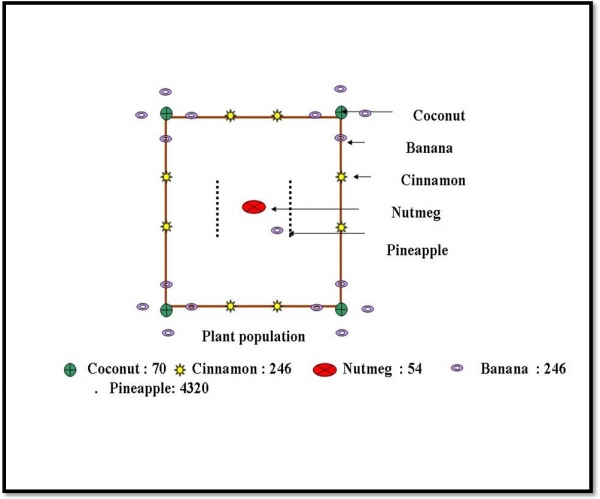
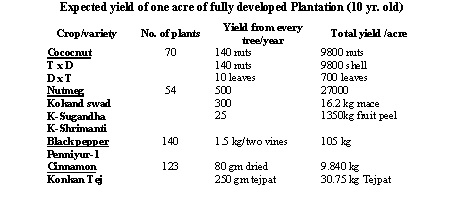

Coconut based mixed farming:
---------------------------
Milk is scarce in areas where coconut is extensively grown mainly because of non availability of fodder. Mixed farming by raising fodder grasses such as hybrid napier or guinea grass along with leguminous fodder crops such as Stylosanthcs gracilis in coconut gardens has been found to be profitable. Raising the above crops in one hectare of coconut garden can support four to five dairy animals. However if hybrid bajra napier (CO-3) is grown as inter crop in coconut garden 8 to 10 animals can be maintained. In addition to the cattle, poultry and apiculture may be integrated depending upon the farmer`s interest. The cattle and poultry manure generated from the system when applied to coconut garden improves the soil fertility considerably. Maintaining milch cows and other components in coconut garden helps the farmer to enhance his income and provide additional employment to the family. A net income of 1.2 lakh rupees per year can be obtained from a one ha coconut based mixed farming unit comprising of components such as 10 milch cows, 3 batches of poultry birds of 100 per batch and CO-3 Hybrid bajra Napier fodder grass. Employment generated from such a unit is about 900 mandays per year.

